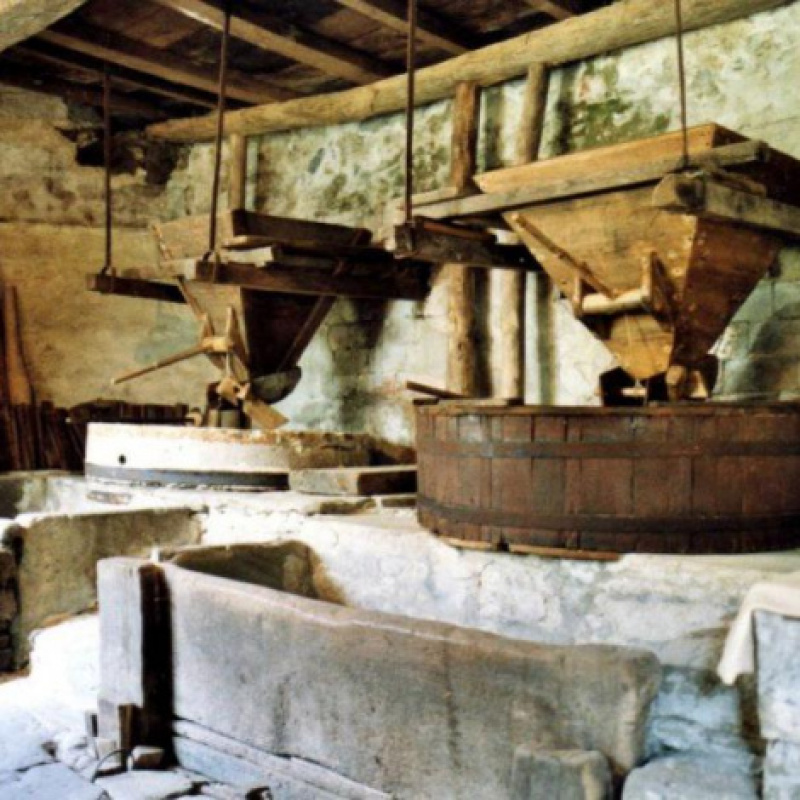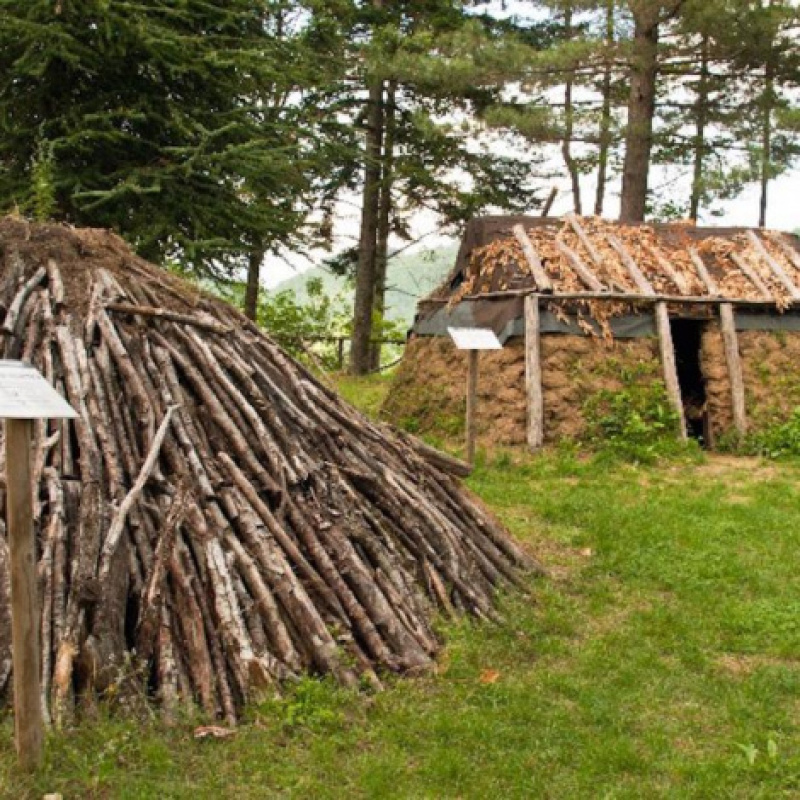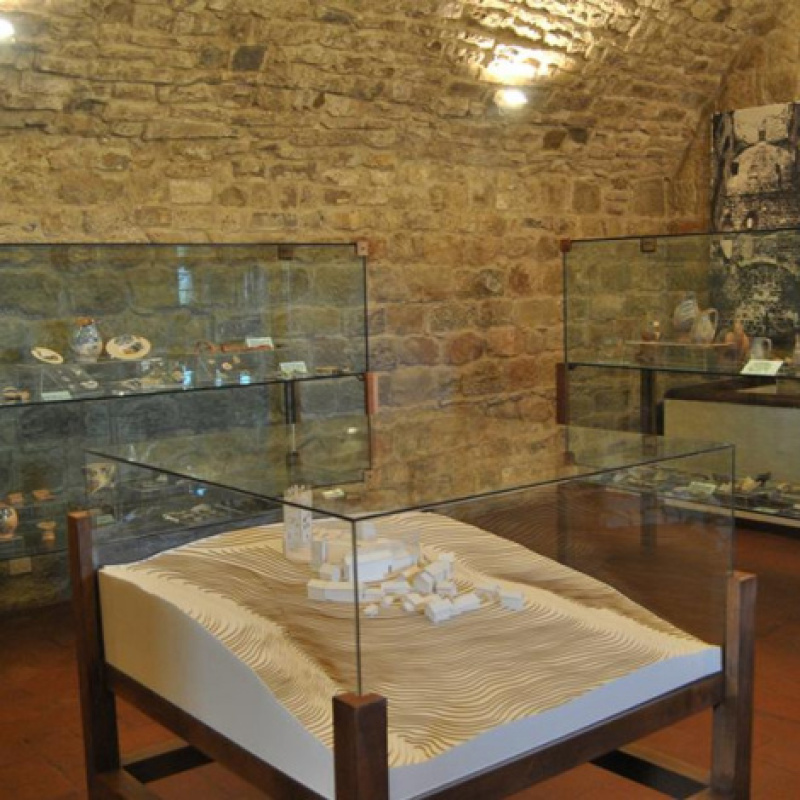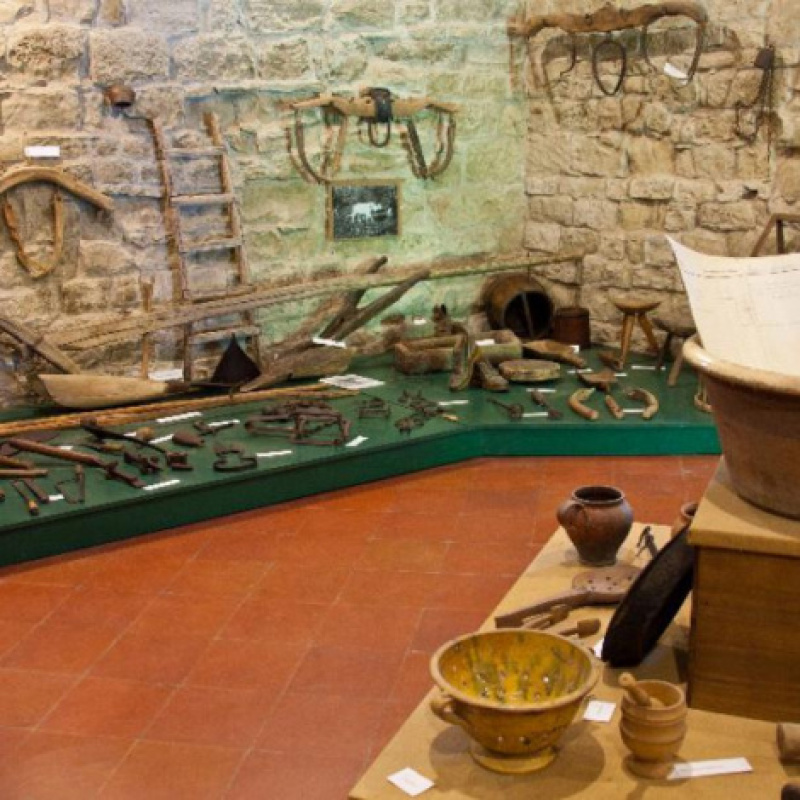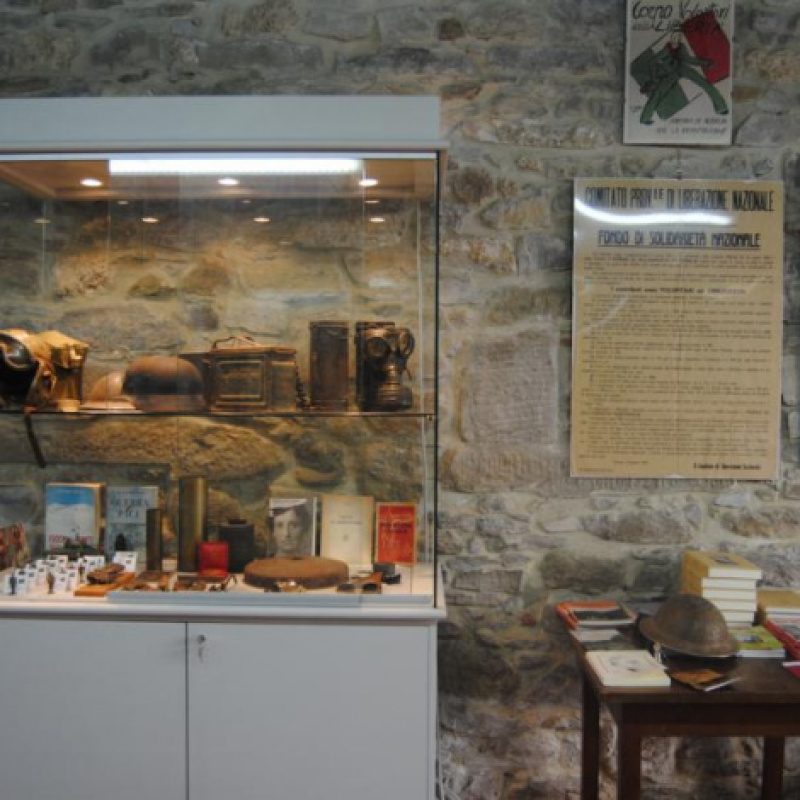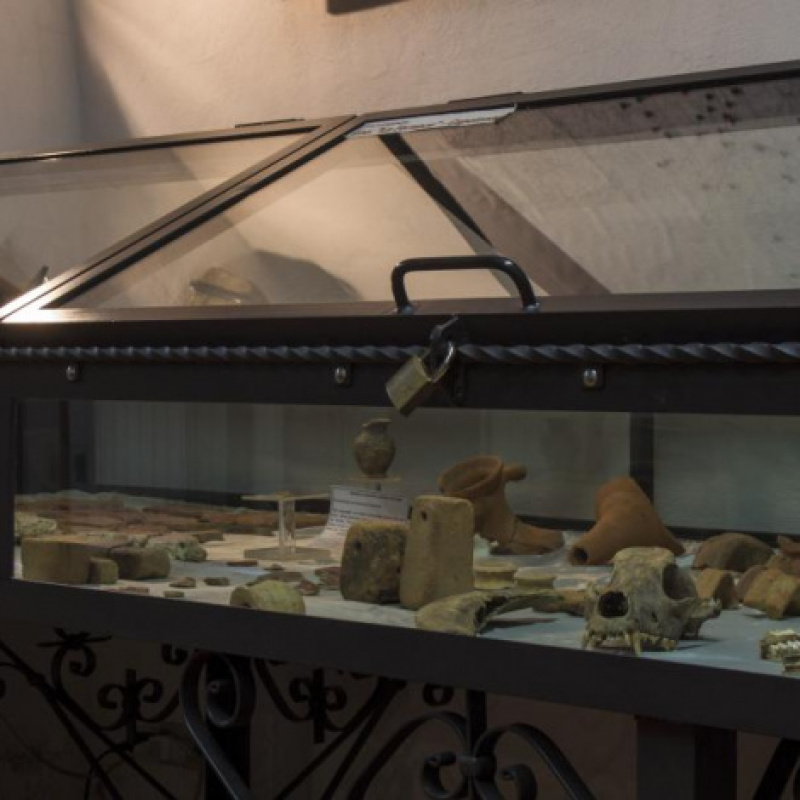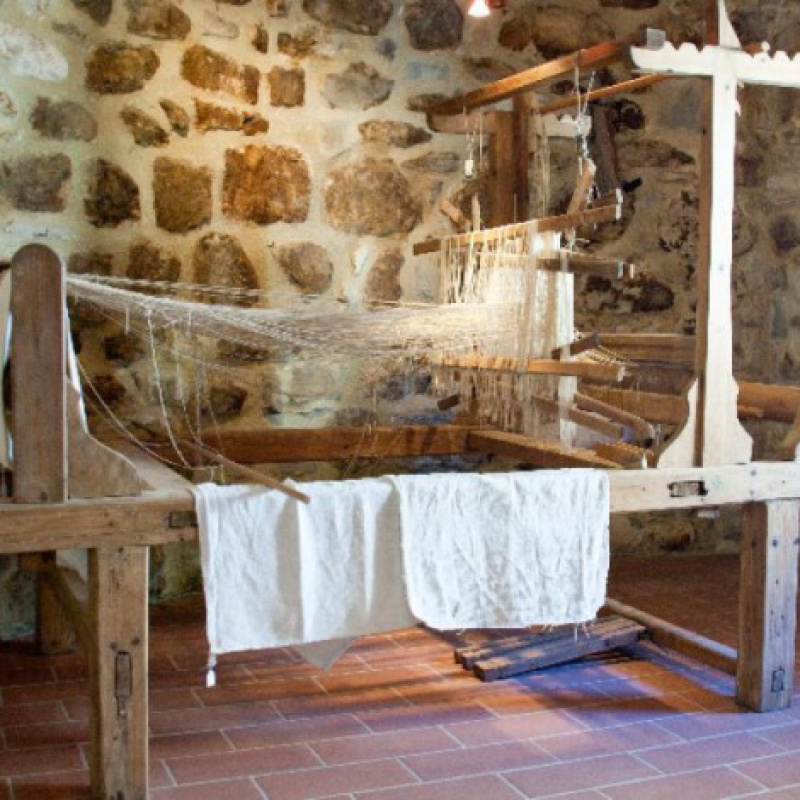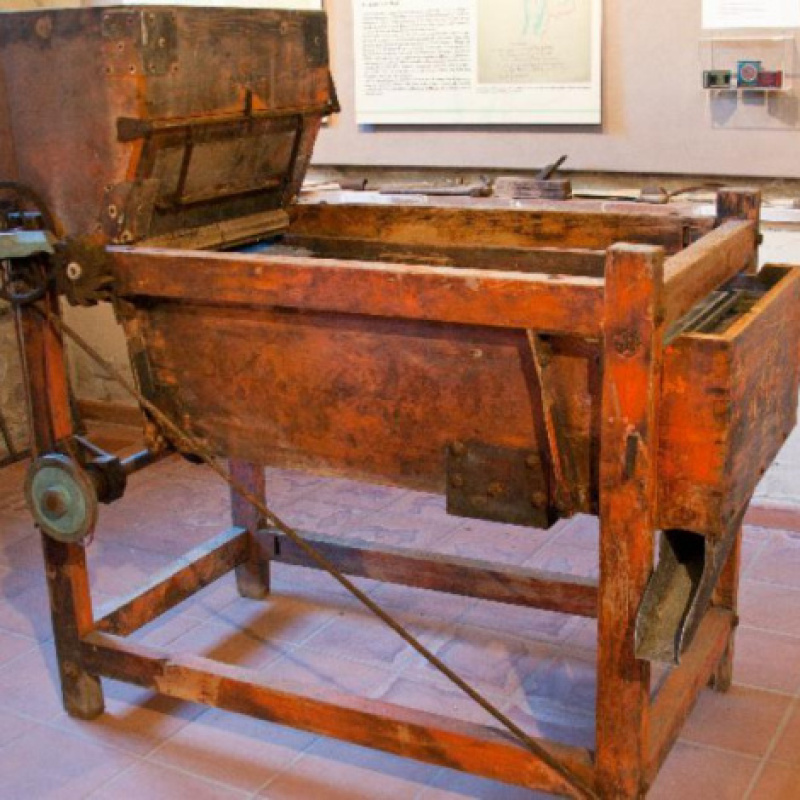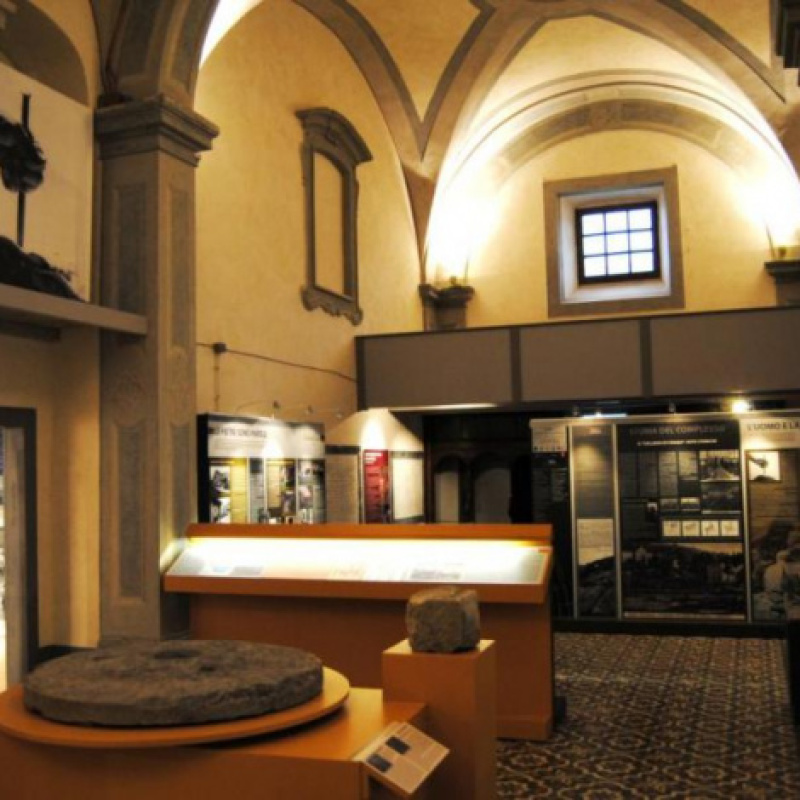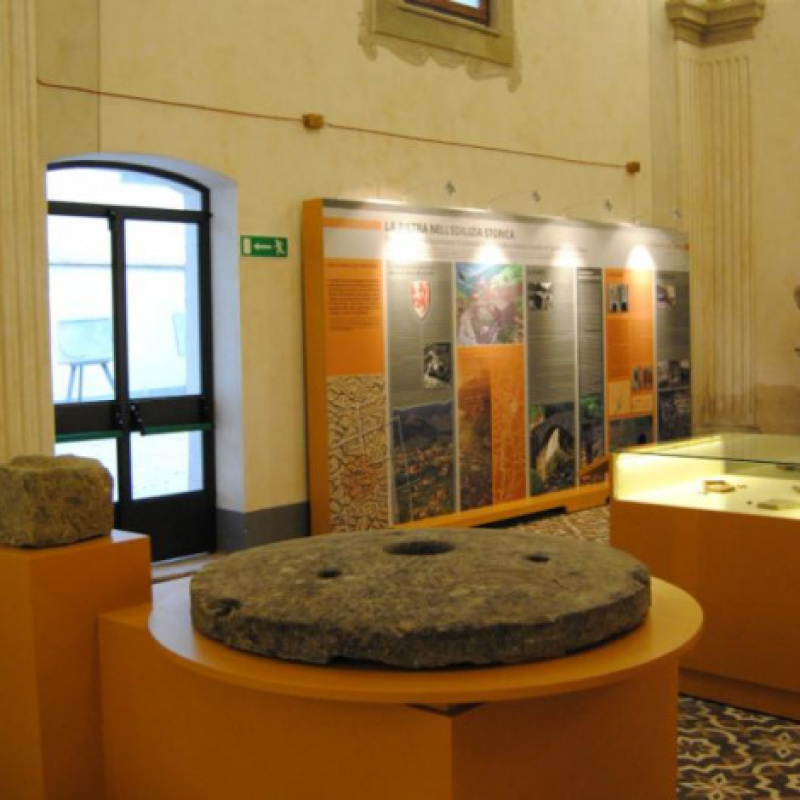Ecomuseo del Casentino
Specchio del passato, cantiere per il futuro Un progetto articolato in una rete di spazi espositivi, testimonianze e esperienze culturali, a stretto contatto con le comunità locali, per la valorizzazione del patrimonio culturale e lo sviluppo della prima valle dell'Arno. Le Antenne: Centro di Documentazione della Cultura Archeologica del Territorio Il Sentiero dei Castelletti - sui passi della Mangialonga Centro di documentazione e Polo didattico dell'Acqua Casa natale di Guido Monaco Centro di documentazione sulla cultura rurale del Casentino Ecomuseo della polvere da sparo e del contrabbando Ecomuseo della Castagna Ecomuseo della Vallesanta Raccolta rurale Casa Rossi Bottega del Bigonaio e Mostra permanente sulla guerra e la resistenza in Casentino Castello dei Conti Guidi di Poppi - Mostre permanenti Museo della Pietra Lavorata - Centro d'interpretazione Ecomuseo della Pietra EcoMuseo del Carbonaio - Banca della Memoria di Porto Franco "Giuseppe Baldini" - Casa dei Sapori Museo dello Sci - Museo del Bosco e della Montagna - Collezione ornitologica "Carlo Beni" Castello di Porciano Molin di Bucchio
Categoria: Link Turistici Casentino
Ecomuseo del Casentino
Ancient crafts, local traditions, nature and archaeology are all to be found here. Archaeology, history, nature and ancient crafts in the heart of the Casentino region: the Ecomuseum was created to gather, document and put on display the traditions of the region. It highlights the importance of keeping alive the memory of ancient skills and habits. The museum is divided into 6 areas which focus on archaeology, water, woodland, agriculture together with local industry. Thanks to the archaeological sites of the area around Castel Focognano, Poppi, Pratovecchio, Stia and Bibbiena, the region is a relevant place to study and learn about ancient Etruscan and Roman civilisation. The section of the museum dedicated to water as it is one of the dominant features of the local landscape and has always played a vital role in local life. By examining the structures of the area's bridges, products and watermills, the museum shows how man's relationship with water in Casentino has changed and developed over the centuries. Also the section that focuses on the region's woodland is very fascinating for its nature. The museum shows the different species of trees that make up the Casentino's forests, from the beech and conifer woods of Camaldoli and La Verna, to the wooded parkland at Ortignano Raggiolo (home to the Chestnut Museum). There are many different ways to get to know better the area, from education centres to museums to guided woodland footpaths. In Cetica, for example, you can visit the Carbonaio Museum, while near Chitignano you can see the Museo della Polvere da Sparo e del Contrabando (the Museum of Gunpowder and Smuggling) where there is a guided walk through the Polveriera dell'Inferno. In Stia, you can visit the Woodland and Mountain Museum. To learn more about local traditions and culture, you should go to theMuseo della Casa Contadina (Peasant's House Museum) in Castelnuovo. Finally, don't miss the part of the Ecomuseum circuit dedicated to local industry such as the wool districts in Stia and Soci which are famous for producing the Casentino cloth. There are also the silk making factories in Rassina and Subbiano which deserve a visit. The Ecomuseum circuit has something for everyone, be it nature, history, traditions or rural economy.
Categoria: Link Turistici Casentino






